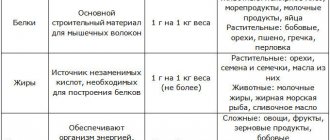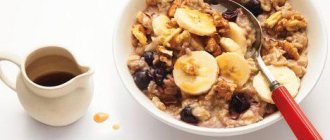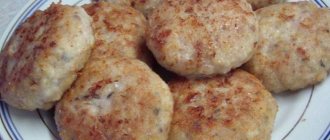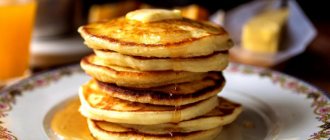What is this substance? Is it beneficial or harmful to the body? What foods contain gluten? Modern buyers have become more literate and when purchasing products they study the labels on the packaging. In this case, attention is paid to the following criteria - the number of calories, the presence of GMOs and gluten content. And if everything is clear with the first two points, then not everyone knows the last definition.
What is this element? What products contain gluten and why is it dangerous?
Gluten - what is it?
Gluten is found in wheat and barley.
Gluten is an organic biocompound (complex protein, protein) that is found in cereal plants such as wheat, rye, triticale, oats, and barley.
For example, in wheat the concentration of gluten can reach up to 80% of the weight of the grain. And the amount of gluten (or gluten) in flour indicates its quality.
If the flour has a sufficient amount of this substance, the elasticity and firmness of the dough made from such flour improves, and when the yeast produces CO2, the dough retains it and rises normally.
Since the properties of baked goods are determined by the presence of gluten in flour, it is often used as a filler for the manufacture of various products. With its help, you can improve the taste of the product, its aroma, structure (it becomes more delicate).
Daily gluten intake for adults and children
The human body's need for proteins is determined by the need to establish a balance of nitrogen, which is constantly lost during the metabolic process. A lack of protein food invariably leads to the fact that the body is forced to break down its own protein to maintain balance, which negatively affects the functioning of internal organs.
The consumption rate depends on gender, age, type of activity and the state of the external environment in places of residence. The bulk of the protein consumed should be of animal origin.
List of foods containing gluten
Plant proteins supplement the daily requirement and are represented in the diet of most people by gluten contained in bread, pasta, bakery and confectionery products, and meat products. The list of gluten-containing products goes on.
The table below shows the daily consumption rates for different categories of adults and children:
| Category of population by occupation | Age parameters | Daily protein requirement, g | |||
| Men | Women | ||||
| Total proteins | Including plant | Total proteins | Including plant | ||
Knowledge workers | 18-40 40-60 | 96 89 | 38 36 | 82 75 | 33 30 |
| Workers with low physical activity | 18-40 40-60 | 99 92 | 45 42 | 84 77 | 38 34 |
| Workers with average physical load | 18-40 40-60 | 102 93 | 46 42 | 86 79 | 39 35 |
| Heavy physical workers labor | 18-40 40-60 | 108 100 | 54 50 | 92 85 | 46 43 |
| Unemployed older people | 60-70 Over 70 | 80 75 | 32 30 | 71 68 | 28 27 |
| Students | — | 113 | 45 | 96 | 38 |
| Athletes during competitions | — | 154-171 | 77-85 | 120-137 | 60-68 |
| Women expecting a baby | — | — | — | 109 | 44 |
| Nursing mothers | — | — | — | 120 | 48 |
| Babies | 0,5-1 1-1,5 1,5-2 | 25 48 53 | 5 -0 12 13 | ||
| Preschool children | 3-4 5-6 | 63 72 | 19 25 | ||
| Children of primary school age | 7-10 | 80 | 32 | ||
| Children Wed. school age | 11-13 | 96 | 38 | ||
| Teenagers of high school age | 14 -17 | 106 | 42 | 93 | 37 |
In what areas is cereal gluten used?
In wheat, 80% of the mass is gluten.
This substance is often used to prepare such food products as:
- Products containing meat - sausages, sausages and other sausages from a low price category;
- Bakery products - pasta, cereal, cookies, breakfast cereals, gingerbread, biscuits;
- Candies;
- Jams, halva, Turkish delight, marshmallows;
- Semi-finished products - cheesecakes, dumplings, cabbage rolls, cutlets, meatballs, dumplings;
- Products containing milk - yoghurts, cheese curds, condensed milk, packaged cottage cheese, ice cream, infant formula;
- Canned meat and fish;
- Products containing soy;
- Crab sticks;
- Blue cheese;
- Mustard;
- Baked goods – muffins, cakes, pancakes, pastries, pies, pizza, cookies;
- French fries, bouillon cubes;
- Ketchups and sauces;
- Mayonnaise;
- Several medications;
- Churchkhela;
- Vitamin and mineral supplements.
Gluten free food
Extreme intolerance to foods containing gluten is celiac disease . It is quite rare, occurring in approximately 1% of the population. People with this disease are forced to follow a gluten-free diet. By consuming gluten-containing foods, they are at risk of death. There is no cure for this disease. The only way out is to completely eliminate gluten from your diet .
There is also a milder degree of gluten intolerance, in which painful and unpleasant sensations arise over the years:
Bloating and flatulence;- Intestinal upset, diarrhea;
- Heartburn;
- Headache;
- Increased fatigue, insomnia;
- Dry skin;
- Skin rashes.
Gluten intolerance is most important in two age categories. The first is infants, during the period when they begin to be introduced to their first complementary foods in the form of cereals and dry milk formulas. The second is people over 50-55 years of age, whose ability of the intestinal villi to process this kind of food deteriorates.
In order to check whether there is an intolerance to grain protein, you need to do a simple experiment - exclude all products containing it from the diet for a while. If this does not affect your state of health , then the problem is something else.
List of gluten-free products:
- Beans and legumes;
- Corn:
- Buckwheat;
- Rice;
- Millet;
- Eggs;
- Fish, seafood;
- Meat;
- Vegetables, greens;
- Fruits;
- Nuts.
As a substitute for wheat flour, which contains a large amount of gluten, gluten-free flour began to be produced. The most common is rice flour, then corn, buckwheat and others.
Is it easy to stick to a gluten-free diet? Apparently not easy, as some will have to completely change their diet. But if the state of health and quality of life, and in rare cases, life itself, depend on it, this will have to be done.
You can buy products on the market directly from the manufacturer. This is especially true for meat and dairy products, seasonal vegetables, herbs, and fruits. Food consisting of fresh, self-prepared dishes is definitely healthier for any diet. Of course, this will require a lot of time and effort, but the result is worth it .
Gluten in baby food
Gluten consumption begins in infancy. Almost all dry milk formulas recommended from 6 months of age contain gluten. If the child is healthy, then in principle this should not worry the parents. If you have allergies or diathesis, it is not recommended to use semolina porridge as complementary foods. For children with gluten intolerance, complementary foods include porridge made from buckwheat, rice, and corn.
When adhering to a gluten-free diet, we should not forget that it is not a panacea. A healthy body needs gluten, since without it the absorption of vitamins deteriorates . Some supermarkets make great marketing efforts by offering products labeled gluten-off and gluten-free, but this is often not true.
Processed products will, in any case, contain at least a minimum of gluten, but they may not contain useful vitamins and minerals at all. Switching to a gluten-free diet without medical indications for a long time is required under the supervision or consultation of a doctor.
Food additives with gluten
There is a whole list of E-additives containing gluten: E150, c, b, d; E160; E411; E636; E471; E953; E637; E965.
Despite the fact that this protein is very often used to make any products, there are products that do not contain gluten. Such products can be identified by the label “hydrolyzed protein” or “modified starch”, which are often listed on packages.
These products can also be found in special health food stores, and more recently in supermarkets. It is worth noting that in high-level restaurants, gluten-free products are a mandatory part of the menu.
Complications of this disease
Headache as a symptom of celiac disease.
For the type of people who cannot digest gluten, a minimal dose of gluten can cause constipation or diarrhea.
Celiac disease itself can cause a whole list of complications, such as:
- Secondary osteoporosis;
- Chronic ulcerative enteritis;
- Tooth enamel is damaged;
- Headache;
- Joint pain;
- Liver disorders;
- Skin rash;
- Nausea;
- Dysfunction of the spleen;
- Fibromyalgia;
- Lymphoma;
- Inability to have children;
- Fast fatiguability;
- Convulsions;
- Lack of vitamins in the body;
- Rheumatoid arthritis;
- Pathology of the pancreas, gall bladder.
Having reviewed such a list of complications that celiac disease causes, it is not surprising that there are so many requests for information about which foods do not contain gluten.
What is the danger of gluten intolerance?
Celiac disease is an autoimmune disease, it is hereditary and manifests itself in damage to the mucous membrane and atrophy of the intestinal villi. It develops due to the fact that the body does not perceive gluten, a specific protein of some grains. Why is it dangerous:
- Intestinal damage leads to impaired absorption of vital nutrients: carbohydrates, amino acids, mineral compounds, vitamins. The body does not absorb them properly from food.
- Due to nutrient deficiency, there is a delay in physical and mental development in children at an early age, and later various diseases arise due to vitamin deficiency, lack of micro- and macronutrients.
- An allergy to gluten leads to a whole list of unpleasant symptoms from the gastrointestinal tract: abdominal pain, flatulence, colic, constipation or diarrhea, nausea, etc.
Celiac disease varies in severity. It is very important to diagnose this disease in time using antibody testing, endoscopy and strictly adhere to a gluten-free diet. To do this, it is important to know what you can eat and what you cannot. Next, we will tell you in detail which products contain gluten and which are safe.
Celiac disease in children
According to statistics, 75% of children are diagnosed with celiac disease, and such children are obese or overweight.
This pathology is caused by digestive dysfunction. Symptoms of this disease vary depending on age. Infants develop intestinal flatulence, chronic diarrhea, severe abdominal pain, and rapid weight loss.
Is this hysteria really worth it?
Photo by Polina Tankilevitch: Pexels
Is the substance really as dangerous and scary as it is made out to be, or is it just a ploy by marketers?
Of course, it is difficult to argue that gluten is harmful for people with celiac disease and individual intolerance. But these diseases are not universal phenomena and many followers of a gluten-free diet do not even know about them, blindly following “fashion”.
But doubts about the harm of gluten are strong. Rumors about harm couldn’t have started just like that? Is there something behind the army of those who are removing gluten from their diet? To figure it out, let's start with the simplest.
How to cure celiac disease?
Glutano products do not contain gluten.
If you or your child have been diagnosed with such an illness, this is not a reason to panic, because this disease can be cured without using medications.
The main and correct solution is to eliminate all gluten-containing foods from your diet. For your convenience, there are entire companies that produce gluten-free products, such as:
- Italian company - Dr. Shar;
- A company from Sweden – Finax;
- German company – Glutano;
- A company from Finland – Moilas.
It will also not be a problem to buy such products in Moscow, because in this regard this city is a leader compared to others. You can also order gluten-free products online or in specialty stores. It is worth noting that the prices for such products are higher than for regular ones, but for people with celiac disease there is no choice, either to cook everything at home.
Please note that all gluten-free products are labeled.
Let's sum it up
- Gluten is a complex protein found in many grains;
- Its benefits have not been fully studied by scientists, but its harm to some people is clear;
- People with celiac disease should completely exclude gluten from their diet and monitor their condition; this also applies to people with intolerance to this protein;
- There are extensive lists of foods, drinks, supplements and medications that contain gluten. You should pay special attention to them and try to limit their consumption;
- The gluten-free diet is therapeutic, so it is not suitable for those who want to lose weight;
- You can find out about intolerance to this protein at home, but it is best to contact a professional;
- There are many high-quality products from leading brands labeled “gluten free”; it is useful for those who have contraindications to pay attention to them.
Gluten-free diet
Questions are often asked about what are the best foods to eat that do not contain gluten. Since the list is large, each person can independently choose the products that he likes to eat most.
If you decide to go on a gluten-free diet, you need to remember that such a diet should be varied; you do not need to limit yourself to 2-3 foods (for example, rice, potatoes and beets). Gluten-free foods are the mainstay of your diet, so be sure to eat fruits, fish, meat, eggs, oils, and vegetables.
When to switch to gluten-free foods
Modern research confirms the connection between the consumption of gluten-containing grains and health problems. For example, these products contain substances that affect the psyche, causing addiction and nervous disorders.
The following signs signal increased intestinal permeability, an inflammatory reaction of the body to foods containing gluten:
- do not get enough sleep, lack of energy during the day;
- frequent mood swings, depression, anxiety;
- decreased sexual desire;
- bloating, flatulence;
- heartburn;
- stool retention or diarrhea;
- need for sweets;
- dry, red skin, rash;
- headache (migraine).
Gluten-free diet for children: recommendations for parents
To achieve the necessary positive results, you need to adhere to several rules:
- For the child, you need to select separate dishes and label them;
- It is necessary to determine a separate cabinet where exclusively gluten-free products will be stored;
- Wash your hands while preparing food;
- When trying foods, start with a dish that was prepared for a child;
- All prohibited products must be hidden away from the child;
- There is no need to give your child foods that cause you even the slightest doubt.
Find out which products do not contain gluten from the video:
Ingredients in English that should alert you
When purchasing products without label translation, for example, abroad, you need to carefully study the composition so as not to miss the following components:
- wheat, rye, barley, oats are the names of gluten-containing cereals;
- stabilizer, emulsifier, starch, flavoring, hydrolyzed vegetable protein, vegetable protein, vegetable gum, malt, malt flavoring, modified food starch and modified starch are additives that may contain gluten. The label may contain traces of gluten means that the product may contain traces of gluten.
List of foods that do not contain gluten
We present to your attention a list of the most popular gluten-free products. They can be consumed without fear by those people who have celiac disease (or celiac entropy).
- Fruits and vegetables;
- Oil - both vegetable and butter;
- Organic corn;
- Pure vanilla and vanilla extract;
- Eggs;
- Natural fish, dairy and meat products;
- Organic buckwheat;
- Rice;
- Potato;
- Maize;
- Spices and seasonings (natural);
- Millet;
- Arrowroot;
- Legumes - chickpeas, beans, beans, peas, soybeans, lentils;
- Nuts;
- Amaranth;
- Turkish peas;
- Tapioca;
- Quinoa;
- Sweet potato;
- Wild rice;
- Teff.
Where might hidden gluten be found?
People with celiac disease should be careful when choosing ingredients and carefully study the composition. First of all, you need to remember about hidden gluten, which changes during certain processing.
Often, the manufacturer may use wheat in the production of products, but this information is not displayed on the label. Or some entrepreneurs do not write about gluten content, believing that its concentration is insignificant.
Products containing hidden gluten (open content):
- crab sticks and other processed seafood, especially smoked ones;
- ready meals and semi-finished products;
- sausage and meat products that have undergone industrial processing;
- store-bought frozen foods;
- vegetable protein;
- starch;
- confectionery decorations, sprinkles, powdered sugar, icing and baking powder, excluding soda;
- marinades;
- canned food;
- dried fruits;
- dairy products, cheeses;
- ice cream and whipped cream;
- chocolate, candies, pastries, desserts and other sweets;
- purchased juices, fruit drinks, nectars, compotes and lemonades;
- dry mixes, yeast, baking mixes, concentrates, powders for preparing drinks;
- mixtures of cereals and muesli, the packaging of which does not contain the inscription “gluten free”;
- ground spices and gelling mixtures;
- bouillon cubes;
- aromatic extracts;
- syrups, sauces, vinegar;
- vegetable milk and cream;
- chewing gum and vegetable resin;
- artificial colors;
- artificial and natural flavors.
A single consumption of products with hidden gluten does not cause severe reactions. But with regular purchase of such products, people with gluten intolerance develop serious disorders of the digestive and nervous system.
Is it possible to determine which foods do not contain gluten?
Capsule endoscopy can help diagnose celiac disease.
The presence of gluten in a product can be determined using one qualitative reaction, which will make it clear whether the product contains gluten or not.
Through many experiments, it has been proven that gluten, when interacting with an iodine solution, changes color and becomes black or purple. But there are two foods that are different from the others - potatoes and rice.
In such plants this protein is absent, but due to the fact that they contain starch, they also change color when interacting with iodine.










